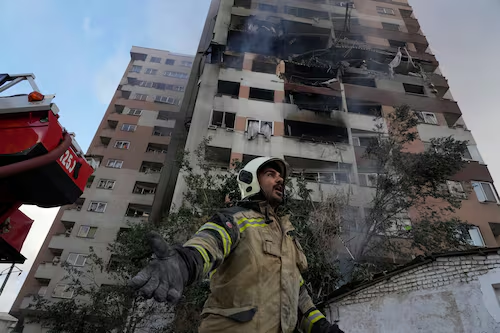Israel Launches “Operation Rising Lion” — Massive Airstrikes Rock Iran
Tehran / June 13, 2025 – In a historic escalation, the Israel Defense Forces (IDF) launched one of the largest-ever sorties against Iran, striking more than 100 nuclear, missile, and military sites in a coordinated operation codenamed “Operation Rising Lion.” The first waves of attacks began in the early hours of June 13 and marked a dramatic intensification in Middle East tensions.
Targets and Scale of the Strikes
-
Nuclear facilities: Among the targets was Iran’s uranium enrichment complex at Natanz, confirmed by both the IDF and the International Atomic Energy Agency (IAEA).
-
Military leadership and scientists: Israeli strikes reportedly killed top Iranian figures, including Revolutionary Guards Corps commander Gen. Hossein Salami, Armed Forces chief of staff Maj.-Gen. Mohammad Bagheri, and nuclear scientists Fereydoon Abbasi and Mohammad Mehdi Tehranchi
-
Missile and air-defense infrastructure: The Mossad reportedly carried out simultaneous covert sabotage operations targeting ballistic missile sites and air-defense systems.
The IDF dispatched over 200 aircraft, deploying more than 330 munitions across five strike waves, focusing on around 100 critical targets.
Israel’s Justification
Prime Minister Benjamin Netanyahu justified the offensive as a pre-emptive necessity, citing intelligence that Iran was nearing a “point of no return” on nuclear weaponization, with enough enriched uranium for 15 nuclear bombs within days. In his statement, Netanyahu emphasized:
“If not stopped, Iran could produce a nuclear weapon in a very short time… we have no choice but to act and act now.”
Israeli Preparations
-
Israel declared a state of emergency; air-raid sirens blared across the country, schools were shut, and Ben Gurion Airport was closed.
-
Tens of thousands of Israeli troops were placed on alert and mobilized across strategic borders.
U.S. Response
The United States clarified it was not directly involved but had been informed in advance. Washington emphasized its focus on safeguarding U.S. forces and facilities in the region. President Trump echoed that Iran “cannot have a nuclear bomb,” while affirming ongoing U.S. diplomatic and military preparedness. However, U.S. lawmakers are deeply divided, with some cautioning about the risk of a broader war.
Iran’s Reaction
-
Supreme Leader Ayatollah Khamenei condemned the strikes as a “wicked and bloody crime” and vowed that Israel would face a “bitter fate”.
-
The Iranian military responded by launching over 100 drones toward Israel, with Israeli defenses allegedly intercepting most.
-
Iran imposed a media blackout, declared a national emergency, and closed its airspace.
Global Fallout & Risks
-
Oil markets surged—prices jumped over 6% on fears of geopolitical spillover.
-
The assault disrupted commercial air traffic over Iran and neighboring airspaces.
-
The operation occurred just days before planned U.S.–Iran negotiations in Oman, casting doubt on diplomatic opportunities.
-
Experts warn the region now braces for a prolonged exchange, with Iran’s potential retaliation against both Israeli and U.S. assets looming.
What’s Coming Next
-
Iran’s response: Will Tehran escalate with missile or drone attacks, or pursue “strategic patience”?
-
Diplomatic backchannels: Can U.S.-mediated talks still resume, or are they irreparably damaged?
-
Civilian fallout: Reports of residential areas in Tehran being hit and potential civilian casualties, including children, are emerging.
-
Regional domino effects: Neighboring states, militant proxies, and markets are all on alert.
This marks a defining moment in Israel–Iran relations—what could have been a shadow conflict between sabotage and proxy fronts has now escalated to overt military confrontation. The world watches anxiously: will diplomacy prevail, or is the region heading into open warfare?
